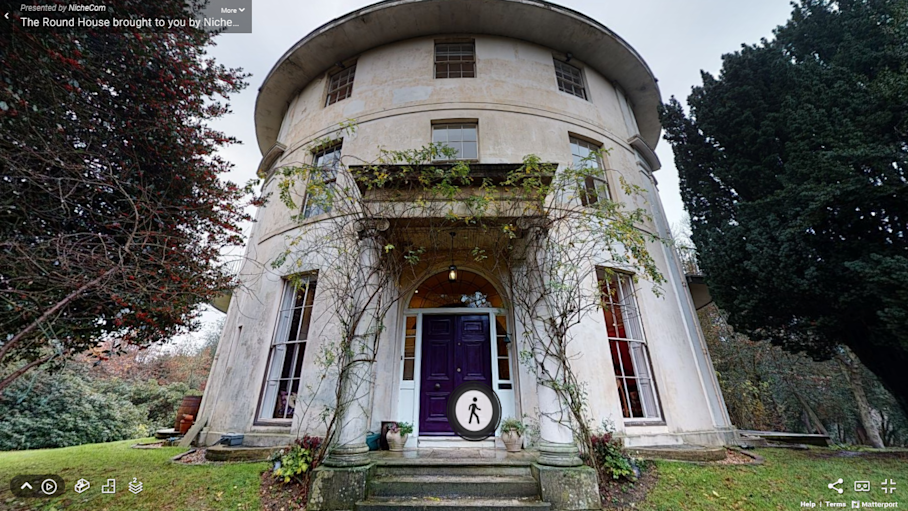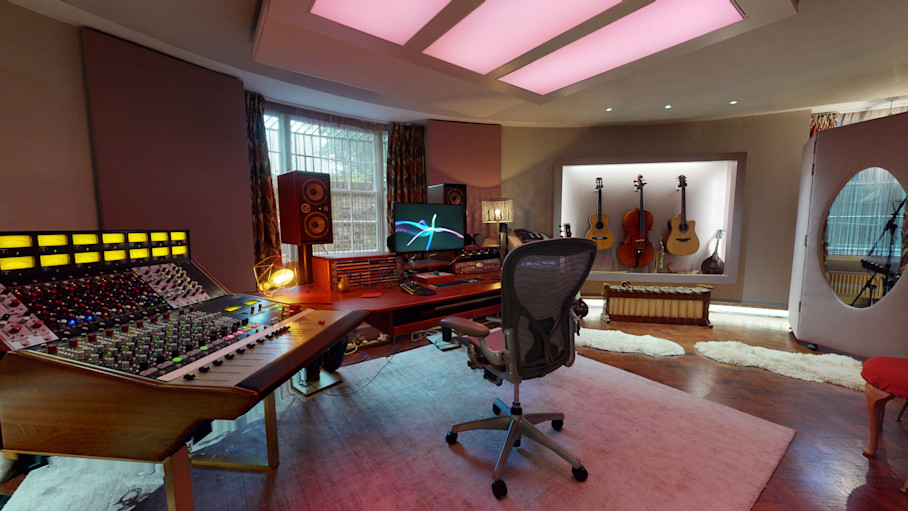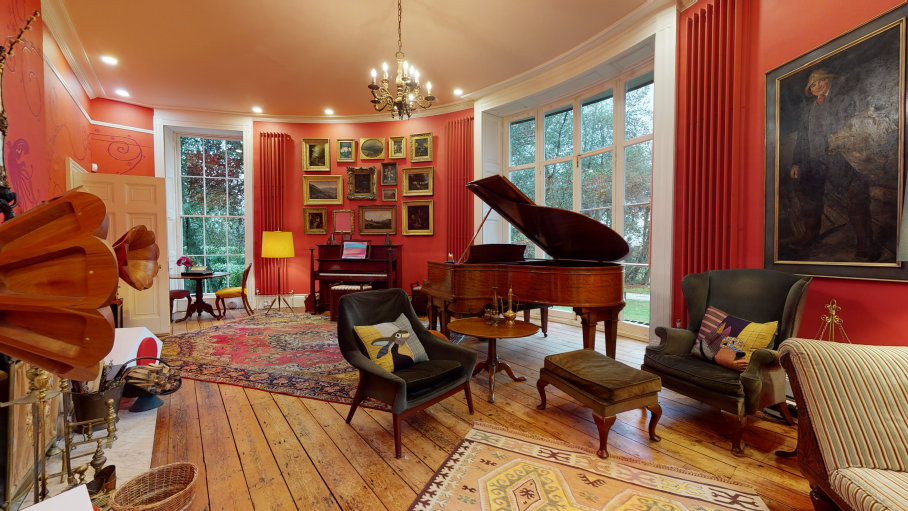This historic home turned residential studio can now be explored through its digital twin
Alexis Michallek, manager of recording studio, The Hideaway at the Round House, shares how the team is using Matterport technology.
Over the past year, many British heritage sites suffered a significant setback. During the lockdown, visitors were unable to explore castles, ruins and other historic buildings. One of these many sites, the Round House, has decided to take its tours online via a 3D digital twin.
This 18th-century home owned by famous recording artist Imogen Heap not only features unique architecture and stunning views, but Heap’s recording studio inside, The Hideaway, has also been the birthplace of many well-known albums.
We caught up with Alexis Michallek, manager of The Hideaway, to discover how the team is using Matterport technology to showcase the property to visitors as well as potential recording artists.

Q: Can you give me some background on the history of The Round House?
It’s a Grade II* listed building, built in between 1792 and 1794. We know it's the first building in the country to have this elliptical shape, so it’s quite special and unique. The story says it was designed in the shape of the tea caddy, because William Sheldon who had it built, was a tea merchant. This story is still controversial to this day.
It was always designed to be a house. However, it kind of fell apart in the mid-20th century during the war because of the treatment by the army who used it for the holding of its own miscreants. After WWII, only the external walls and central staircase remained. The family who currently owns it bought the land just after the war, and they looked into its history and fell in love with it. They decided to bring it back to life.
It took several decades. By then, English Heritage still gave people funding to help. It was only in the 1980s that the house was finally back in a decent state, and the family was able to move in and live there.
The current owner, Imogen Heap, bought the house from her dad in 2006. She decided as a musician, she needed a place for her own recording studio, and that would be inside the house in the basement. Since then, she’s moved to London, and we’ve turned the home into a residential studio. Other musicians can come for a retreat and write and record songs here. Through the years, we’ve had the likes of Taylor Swift, Ariana Grande, Mika and Amanda Palmer visit and stay.

Q: How has the Round House coped through the pandemic?
During the first lockdown, recording studios couldn’t run. It was the beginning of the pandemic and we just didn’t know what to do — everything had stopped. We reopened in September 2020. Since then, we’ve been allowed to run our activities as usual, just making sure we’re COVID-19 Secure, following all guidelines. There has actually been a lot of demand, as labels are keen to send their artists away from the cities to somewhere they can have a walk outside and generate inspiration for their songs.
Q: What inspired the 3D capture of the Round House?
The house is really special and unique in its own way, so it can be hard for people who haven't visited to picture it. Every time someone gets in touch with a request to come to the recording studio, they ask what it’s like. We show them some pictures, but they still can’t quite figure it out.
There’s also the issue that, because we are a listed building, we have to open the house for visitors, at least during London Open House days, which we haven't been able to do in 2020 due to the pandemic.
This is when we felt we needed something better, such as interactive floor plans, or a virtual visit, to help us keep showing the house. At this point, a relative was selling a flat in London, and they were using Matterport. We felt it was absolutely perfect to showcase the house and allow people to visit it even when they can’t come in person.
Q: What are the “must-sees” you want visitors to explore and why?
I think people will come with different approaches. For example, musicians really want to get a sense of what the studio is like and what it looks like downstairs. Yet some people are really interested in seeing the bedrooms since they’re wondering if they could sleep in there and whether they’d feel cozy. There are also visitors who are just curious about spending time in the house and looking at all the details.
We just want people to be able to have the choice to view the house from their own homes and look around at their leisure.

Q: What’s the one thing you want visitors to take away after exploring the Round House?
What the scans show really well is how you feel in the different rooms because the shape is so peculiar, there's nothing else like it. You look at the house in the dollhouse view feature, go into one of the rooms and you know you would never stand in another space like it.
Q: Why would you recommend Matterport technology to others?
Matterport was perfect. It's really affordable and we had a great contact, so it was very easy. The Matterport team sent a very lovely woman to help complete the scans, so it was a really smooth process.
The results were great. We only needed a few tweaks on it, and they did it. Perfect, simple, and well done.
